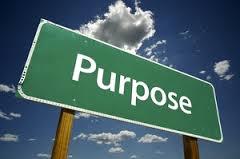Culture as a fourth bottom line is already in use. The New Zealand government has adopted this concept in consideration of its indigenous population and their welfare in the country, the Maori. This approach assumes that sustainable development includes cultural continuity and the development of cultural well-being for the indigenous people and ensures culture has fair consideration in all public policy.
An example is community building. A publicly funded project is evaluated on a number of indicators, including enhancing the cultural identity of those involved, with other indicators for performance and the other three bottom lines.
‘Spirituality,’ or faith, is considered in a broader context than religion or belief. It is that which gives meaning to one’s life and draws one to transcend. Relating a person, community or people with their faith and relationship with a higher power can be seen as ethereal. Hence, difficulty in measurement is apparent.
Looking at the trends in our society and popular culture, it is clear that there is currently a mass quest for purpose and meaning in our lives. A critical mass of individuals are demanding that this level of consciousness extend into our working lives, in order to foster purpose in our jobs.
Purpose in the Business
There are three ways that a business can generate purpose:
Creating purpose for customers, users, or participants
The well-known online marketplace Etsy owes much of its success to the creation of a community of artists selling directly to customers. But more than just providing an interface, the company fosters off-line meet-ups, markets and workshops to create and contribute to a culture of artisans that benefit directly from the creation of that culture.
Creating purpose for your employees
There are different ways to create purpose for your employees. Greystone Bakery in Yonkers, NY and Namaste Solar in Boulder, CO are great examples of taking an employee-centric focus towards generating purpose. Greystone is a bakery that offers employment opportunities for individuals living in poverty in Southwest Yonkers. They measure their success by progress of their employees and are driven by creating meaningful life-changing opportunities for them.
Building purpose through your supply chain
As Guayaki Yerba Mate demonstrates, generating purpose through your supply chain requires investing in deep personal relationships with suppliers and developing an intimate understanding of what’s required to ensure mutual benefit. The company’s goal is to steward and restore 200,000 acres of South American Atlantic rainforest and create over 1,000 living wage jobs by 2020 through a market-driven restoration business model. They’re also committed to establishing positive impact through fair trade sourcing, paying living wages, and investing in supplier education. Guayaki’s success is deeply embedded in interdependent relationships with individuals and organizations throughout their supply chain.
Where the 4th Bottom Line Begins
Real change must begin from inside the organization. Specifically, it starts with an assessment of the lack (or abundance) of purpose the business generates, culturally, spiritually and even among individual employees. This level of change is what what creates the capacity for an organization to become purpose-driven.
The fourth bottom line provides an additional opportunity for companies and other entities to express a clear purpose in order to improve the planet with community well-being. There are a number of dimensions that lend themselves to measureable, quantifiable indicators.
An example of enhancements in cultural identity is funding a program that supports Native American tribal elders to spend time with their younger citizens exchanging stories, traditions and language. There is potential for measurable outcomes in behavior, self-image, school performance, and ideally decreased juvenile delinquency. A socially responsible product for sale that fosters expressions of peoples’ faith may be another place to measure value for this bottom line.
Developing organizational spiritual intelligence happens through trial and error and an ongoing commitment to engagement. There are methods but no one-size-fits-all solutions since purpose is by its very nature context-dependent. The best place to start when it comes to purpose is with people, you, your co-workers and your employees. Beginning is the hardest part but once you start you will likely find that the process naturally evolves, ultimately leading you to the most appropriate action plan for your organization.
Resources
There are many great sources to guide individuals and businesses in institutionalizing spiritual intelligence in the workplace and defining purpose in people’s jobs. There are exceptional personal coaches as well as organizations dedicated to helping professionals and organizations develop their spiritual awareness and sense of purpose. Imperative, based in NYC, is dedicated to connecting people to purpose at the organization level and helping them unearth the meaning in their current jobs and workplaces. They have a free online purpose assessment tool – a great place to start.
Onwards with purpose
Acting responsibly is not about strengthening our reason. It’s about deepening our concern for the welfare of others and ourselves. The quadruple bottom line brings our attention to purpose and its importance in the workplace and our lives. And it demonstrates the power we have for positive transformation in the process of becoming purpose-driven people.
{jcomments on}
Lauren Zahringer is an intern with Social Enterprise Associates. The Firm, a registered B Corp, provides management consulting and capital raising with focus on the triple bottom line. Business planning, market research, investment support and other services have enabled clients to raise more than $100 million.
B Corp certification is distinct from the benefit corporation form of business that is legislated in many U.S. states.

